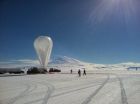(Press-News.org) MADISON – Zhen Huang freely admits he was not interested in blood vessels four years ago when he was studying brain development in a fetal mouse.
Instead, he wanted to see how changing a particular gene in brain cells called glia would affect the growth of neurons.
The result was hemorrhage, caused by deteriorating veins and arteries, and it begged for explanation.
"It was a surprising finding," says Huang, an assistant professor of neuroscience and neurology at the University of Wisconsin-Madison. "I was mainly interested in the neurological aspect, how the brain develops and wires itself to prepare for all the wonderful things it does."
But chance favors the prepared mind, as Louis Pasteur said, and Huang knew he needed to follow up on the suggestion that glia, normally considered "helpers" for the neurons, would affect the growth of blood vessels. For one thing, blood flow is a big deal in the brain, says Huang, whose collaborators included Shang Ma, in the graduate program in cellular and molecular biology at UW-Madison. "We know the brain is very energy-intensive. Per unit of volume, it consumes 10 times as much oxygen as the rest of the body."
Although it makes intuitive sense that blood vessel development should be guided by neuronal development in some fashion, Huang spent years making sure he wasn't being mislead by his experiment. Now, he's satisfied himself, and his scientific reviewers, and the journal PLOS Biology has just published his study.
Glial cells in the nervous system establish a nurturing environment for neurons but do not carry signals. In particular, Huang looked at "radial glial cells," which also act as stem cells in creating new neurons. Radial glia extend from the inside of the brain to the outside, and also guide growing neurons to their final locations.
A standard way to find out what cells and genes do is to "knock out" specific genes, using a technology invented at UW-Madison by former professor Oliver Smithies (who shared the 2010 Nobel Prize for this discovery).
When Huang grew mice with a "knock out" mutation that blocked cell division among the radial glia, he expected to see abnormalities in the embryonic brain. But the major abnormality was completely unexpected: blood vessels that had already formed had collapsed.
New blood vessels in an embryo generally develop via a two-step process, first growing, and then stabilizing. "If the second step cannot be carried out, the vessels may already be formed, but the organ still cannot get its blood supply because the vessel will regress, or collapse," Huang says.
When blood vessels collapse, neurons start to die, says Huang. Some brain diseases, including Alzheimer's and hemorrhagic stroke, show a similar regression, and Huang says it's possible that the signaling mechanism that he experimentally blocked may play a role in these diseases as well.
Although any clinical treatment is years away, Huang is still basking in the thrill of basic discovery.
"We find that these progenitor and helper cells, the radial glia, regulate blood vessel development, and nobody has found that before." Huang says. "We used a mouse with alterations in genetics that regulate activity in these helper cells in the brain, and were very surprised to see that this had a drastic effect on blood vessel development. Previously it was always thought that these were two separate systems, now we know there is crosstalk between them. It's almost like a new field has opened up."
###
– David Tenenbaum, 608-265-8549, djtenenb@wisc.edu
Note: A high-resolution photo to accompany this release is available at http://www.news.wisc.edu/newsphotos/huangBloodVessel12.html
END
New York, NY—January 24, 2013—Samuel K. Sia, associate professor of biomedical engineering at Columbia Engineering, has taken his innovative lab-on-a-chip and developed a way to not only check a patient's HIV status anywhere in the world with just a finger prick, but also synchronize the results automatically and instantaneously with central health-care records—10 times faster, the researchers say, than the benchtop ELISA, a broadly used diagnostic technique. The device was field-tested in Rwanda by a collaborative team from the Sia lab and ICAP at Columbia's Mailman School ...
Animal scientists in Brazil have found that a small dose of the feed additive ractopamine can boost pork production without changing how pork looks or tastes.
In the latest issue of the Journal of Animal Science, researchers report that a 5 mg/kg dose of ractopamine increased muscle mass and feed efficiency, and had no noticeable effect on pork marbling, fat content, toughness or color. The researchers came to this conclusion by testing pork from 340 pigs raised under commercial conditions.
"We found that if [pork producers] use 5 mg/kg of ractopamine in the finishing ...
TORONTO, Jan. 24, 2013—Up to one-third of patients undergoing surgery in Ontario have a treatable form of anemia but are not optimally treated for it.
A paper published online today in the Canadian Journal of Anesthesia says that hospitals that do treat patients with anemia have better outcomes, including fewer blood transfusions and infections and shorter hospital stays.
A common option for management of anemia has been blood transfusion. But blood transfusions are expensive and are associated with higher death and complication rates.
Dr. Gregory Hare, an anesthesiologist ...
COLUMBIA, Mo. – Health care practitioners now can access patients' data using electronic medical records, which often include information systems that assess individuals' medical histories and clinical research to facilitate doctors' diagnoses. A University of Missouri researcher says the increased use of computerized clinical decision support systems (CDSSs) leads to greater patient dissatisfaction and could increase noncompliance with preventative care and treatment recommendations.
Victoria Shaffer, an assistant professor of health sciences and psychological sciences, ...
ANN ARBOR—A new way of making crystalline silicon, developed by U-M researchers, could make this crucial ingredient of computers and solar cells much cheaper and greener.
Silicon dioxide, or sand, makes up about 40 percent of the earth's crust, but the industrial method for converting sand into crystalline silicon is expensive and has a major environmental impact due to the extreme processing conditions.
"The crystalline silicon in modern electronics is currently made through a series of energy-intensive chemical reactions with temperatures in excess of 2,000 degrees ...
PHILADELPHIA—Infectious diseases in Ghana tend to capture the most attention, but a quiet crisis may soon take over as the country's most threatening epidemic: cancer.
A new study published in January in the journal BMC Cancer, led by Kosj Yamoah, M.D., Ph.D., a resident in the Department of Radiation Oncology at Thomas Jefferson University and Hospital, takes aim at the issue by investigating prostate cancer diagnoses and treatment delivery in black men living in the West African region, in order to devise research strategies to help improve health outcomes.
Overall, ...
CHAMPAIGN, Ill. — A retailer's optimal store layout is the result of balancing the interests of two different types of markets – consumers and suppliers, says new research co-written by a University of Illinois business professor.
According to Yunchuan "Frank" Liu, a retailer's strategic manipulation of store layout is driven by an incentive to balance the shopping process of "fit-uncertain consumers" and the pricing behavior of upstream suppliers.
"Retailers face two different kinds of markets – the consumers who buy goods, and the manufacturers that supply goods," ...
Tropical Cyclone Garry is in a good environment to intensify and satellite imagery from NOAA's GOES-15 satellite helped confirm that the storm has become more organized.
NOAA's GOES-15 satellite captured an infrared image of Tropical Storm Garry when it was located about 330 nautical miles (379.8 miles/ 611.2 km) east of Pago Pago, American Samoa. The image, created by the NASA GOES Project at the NASA Goddard Space Flight Center in Greenbelt, Md., was taken Jan. 24 at 1500 UTC (10 a.m. EST). The image showed a bright white circle of clouds that indicate strong thunderstorms ...
Infrared imagery from NASA's Aqua satellite revealed that a band of thunderstorms on the eastern side of Tropical Storm Oswald's remnants still contained some punch. Oswald's remnants have triggered severe weather warnings in parts of Queensland, Australia.
When NASA's Aqua satellite passed over the eastern side of the remnants of Tropical Cyclone Oswald the Atmospheric Infrared Sounder (AIRS) instrument captured an infrared image of a powerful band of thunderstorms over the Coral Sea. The band of thunderstorms east of Oswald's center showed some strong convection and ...
Flying high over Antarctica, a NASA long duration balloon has broken the record for longest flight by a balloon of its size.
The record-breaking balloon, carrying the Super Trans-Iron Galactic Element Recorder (Super-TIGER) experiment, has been afloat for 46 days and is on its third orbit around the South Pole.
"This is an outstanding achievement for NASA's Astrophysics balloon team," said John Grunsfeld, associate administrator for the Science Mission Directorate at NASA Headquarters in Washington. "Keeping these huge balloons aloft for such long periods lets us do ...





